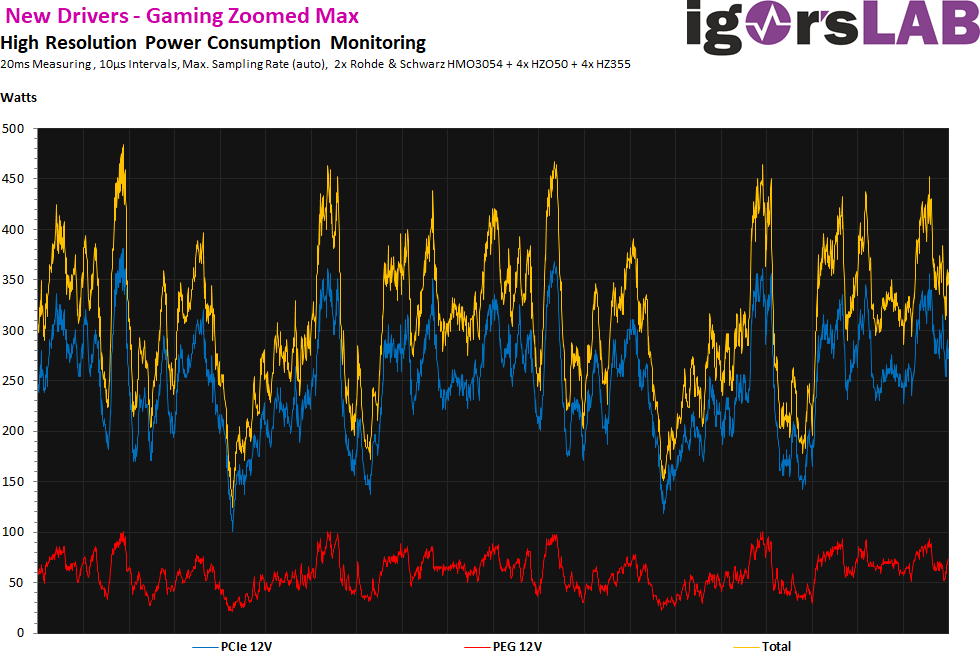 14.12.2020., 07:59
14.12.2020., 07:59
|
#3857
|
|
Premium
Datum registracije: Feb 2005
Lokacija: Zagreb
Postovi: 2,138
|
nedas se ti i dalje krstiti, ajde fino daj si vremena pa detaljno prouci kak se ispravno mjeri peak power, kosmati iz nexusa ocitno nije koristio osciloskop, ili ako ga je koristio onda nije koristio dovoljno nisku jedinicu vremena za ocitanje....
Pises tu kako je xyz W dovoljno, netko ce pomisliti da znas sto pises pa ce se sjebati.
Citiraj:
Transients and power supply recommendation
As I have already proved in detail in my basic article “The battle of graphics card against power supply – power consumption and load peaks demystified”, there are also higher loads in the millisecond range, which can lead to unexplainable shutdowns in the case of unfavorably designed or improperly equipped power supplies. The TBP (Typical Board Power) measured by the graphics card manufacturer or the reviewers alone does not really help in this case for a stable system design.

Peaks with intervals between 1 and 10 ms can lead to shutdowns in very fast reacting protective circuits (OPP, OCP), especially in multi-rail power supplies, although the average power consumption is still within the standard. For this card, I would therefore calculate at least 420 to 450 watts as graphics card load for the normal OC, proportionally to the total secondary power consumption of the system, in order to have enough reserves for the worst case scenario. A short excerpt with higher resolution shows us now the 20 ms measurements (10 μS intervals), as I let them run automatically for value determination:
The power consumption in gaming and torture test in detail
First I compared the power consumption during the Gaming Loop. The power limit of the graphics card is 320 watts

The problem with this resolution of 20 ms is that you can’t see the right spikes either, because they get lost in the averaged acquisition and are simply accumulated broken. Let’s therefore switch to the microsecond range, where NVIDIAS Boost also operates. And lo and behold, the spikes are now also clearly visible. Exactly here we see the real difference with the spikes! While with the old driver it was often between 580 and 600 watts, it is now suddenly at least 70 watts less and also the characteristic and frequency decreases strongly! So we can see very well where the missing 4 watts have gone. Not on average, no, but predominantly in the maximum peaks! This is also one of the reasons why the loss of performance should turn out to be manageably small in the end. Control rage slowed down, visible.

|
__________________
 
|

|

|